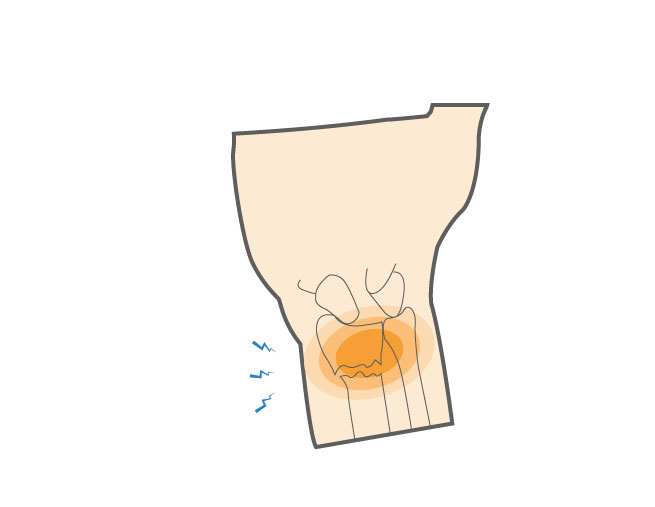A common injury for athletes is a broken (fractured) wrist. The bone that usually breaks in the wrist is the radius, the larger of the two forearm bones that meet at the wrist (or distal) end of the arm. Distal radius fractures are very common and can happen to athletes who play any sport where falling is possible. There are different kinds of distal radius fractures: some can break the skin, extend into the wrist joint, or involve breaks in multiple places.
Distal Radius Fractures Causes, Symptoms & Treatment
A common injury for athletes is a broken (fractured) wrist. The bone that usually breaks in the wrist is the radius, the larger of the two forearm bones that meet at the wrist (or distal) end of the arm
Overview
Overview

What causes Distal Radius Fractures?
Distal radius fractures commonly happen after a fall onto an outstretched hand. People with osteoporosis (decreased bone density) are at an increased risk if they fall. But even young athletes with strong bones are susceptible to broken wrists if the impact is hard enough.
A broken wrist is most common in these sports:
• Skiing
• Snowboarding
• Skateboarding or inline skating
• Bicycling
• Contact sports (e.g. football or hockey)
Symptoms
Distal radius fractures usually result in immediate pain in the forearm and the wrist. Common symptoms also include:
• Swelling and tenderness in wrist area
• Bruising (black and blue discoloration)
• Wrist looks crooked in how it bends or hangs
When to see a doctor
If the injury to your wrist is very painful, or your wrist doesn’t look right, you should go to the emergency department for immediate care. Seeking medical attention as soon as possible is important if you think you have a wrist fracture, especially if there is bleeding through the skin, you feel numbness, or your fingers lack pinkness. If you have less severe symptoms, schedule an appointment with your doctor for the next day.
After asking questions about your medical history and conducting a physical exam, your doctor will order x-rays of your wrist to confirm whether your wrist is fractured. Sometimes, additional imaging tests, such as a magnetic imaging test (MRI) will be necessary to see if there are injuries to the soft tissues around your wrist.
Non-operative treatment
If the fractured bones are in proper alignment (non-displaced), or if your doctor can realign the broken bones in place, then a distal radius fracture is treated without surgery. Conservative treatments typically involve:
• Immobilizing the wrist with a splint for the first few days after the injury
• Applying a cast once the swelling goes down
• Taking x-rays after the cast is applied to check the fracture alignment (the cast may be changed if it gets loose over the next four to six weeks)
• Physical therapy
You can also try these exercises at home after the bone heals:
Surgical Treatment
If the fractured ends of the radius cannot be aligned or kept aligned in a cast, then your doctor may recommend surgery. Your surgeon will advise on the best surgical options for you based on the type of distal radial fracture you have. After the broken bones are carefully aligned, your surgeon may hold them in the correct position with only a cast, or by inserting pins, an external fixator, a plate and screws, or a combination of these options.
Recovery
Most athletes will fully recover from a broken wrist. Depending on the type and severity of the fracture, recovery time can take more than a year. Patients may experience moderate pain for a few weeks after their injury and treatment. Athletes may initially return to low impact sports, such as swimming or bicycling, after a month or two. You can expect to resume play after three to six months.
GET BACK TO WHAT YOU LOVE. FASTER
Sources
https://orthoinfo.aaos.org/en/diseases–conditions/distal-radius-fractures-broken-wrist/
https://health.uconn.edu/msi/clinical-services/orthopaedic-surgery/hand-and-wrist/distal-radius-fracture-colles-fracture/
https://www.sports-health.com/sports-injuries/hand-and-wrist-injuries/diagnosing-distal-radius-fracture
https://www.webmd.com/a-to-z-guides/colles-fracture#1

